Rhineland Pattern
This pack was probably the culmination of a mixture of designs from 19th century Germany which emerged as one of Dondorf's more popular house patterns by around 1900.
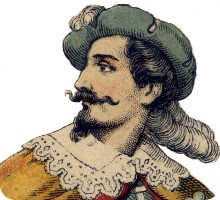
Dondorf: “Rhineland Pattern”
...a Dondorf House pattern.
This pack was probably the culmination of a mixture of designs from 19th century Germany which emerged as one of Dondorf's more popular house patterns by around 1900. The four Kings each have white wavy hair and beards, giving rise to the nickname “Jewish Pattern”. Its popularity was increased by its being widely used and copied by Austrian, Belgian, Dutch, Polish, Portuguese and other manufacturers, some of whom created new variants. Some versions have scenic Aces (historical or geographical) which vary from pack to pack; others have plain Aces. The pattern continued to be produced after the takeover by V.A.S.S. in 1933.
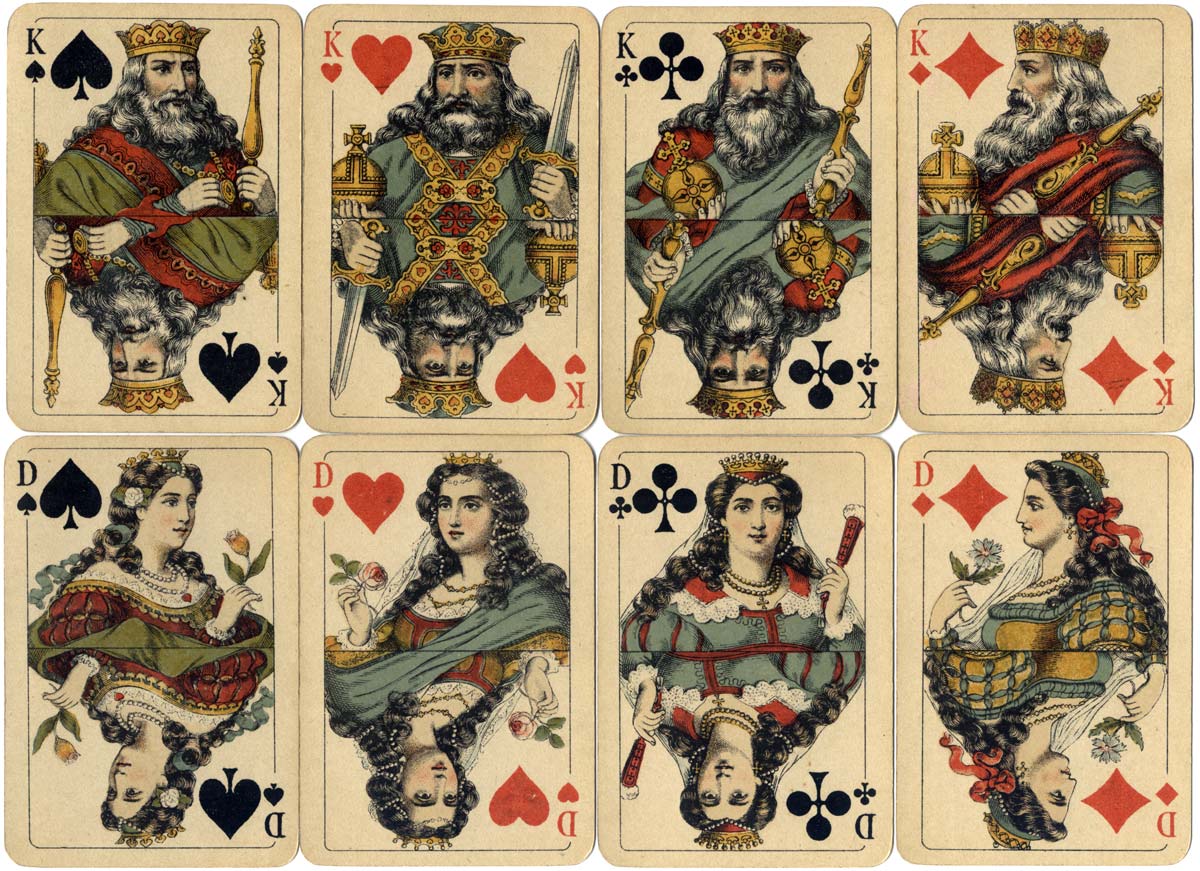

Above: Whist No.122 manufactured by Dondorf GmbH, c. 1910, sometimes referred to as “Jewish Pattern” because of the Rabbinical look of the bearded Kings. This example of the “Rhineland Pattern” has plain Aces.
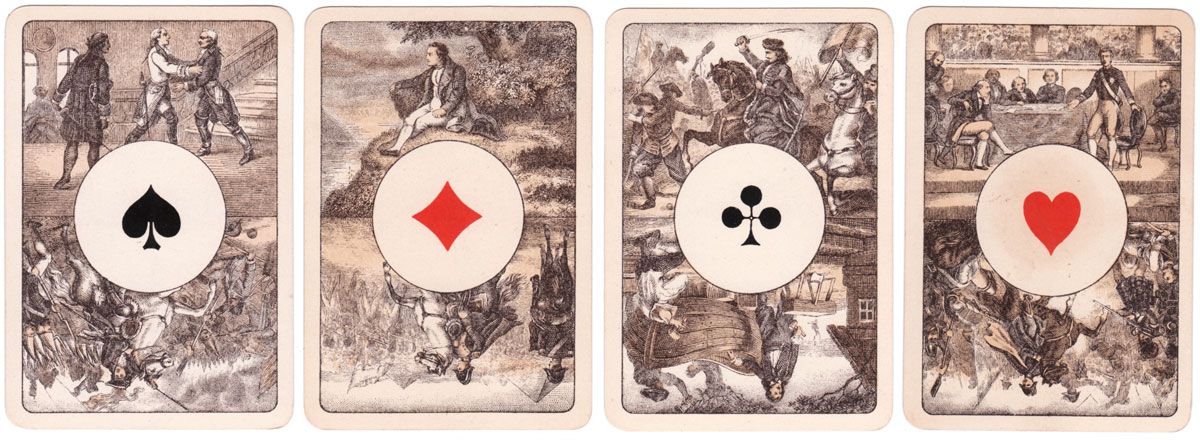
Above: this slightly earlier example of the “Rhineland Pattern” with no indices has special Aces for Java showing scenes are of Dutch history (click to see up-side-down). Images courtesy Rex Pitts.
Rhineland Pattern by KZWP, 1980s


Above: Rhineland pattern with English indices printed by KZWP, c.1986. The ace of hearts has a different font for the indices, and has four indices while the other cards all have two. Housed in an unmarked silk-lined bridge box with no indication of a brand name. Image courtesy Matt Probert.
Rhineland Pattern by F. X. Schmid for The Netherlands, c.1990
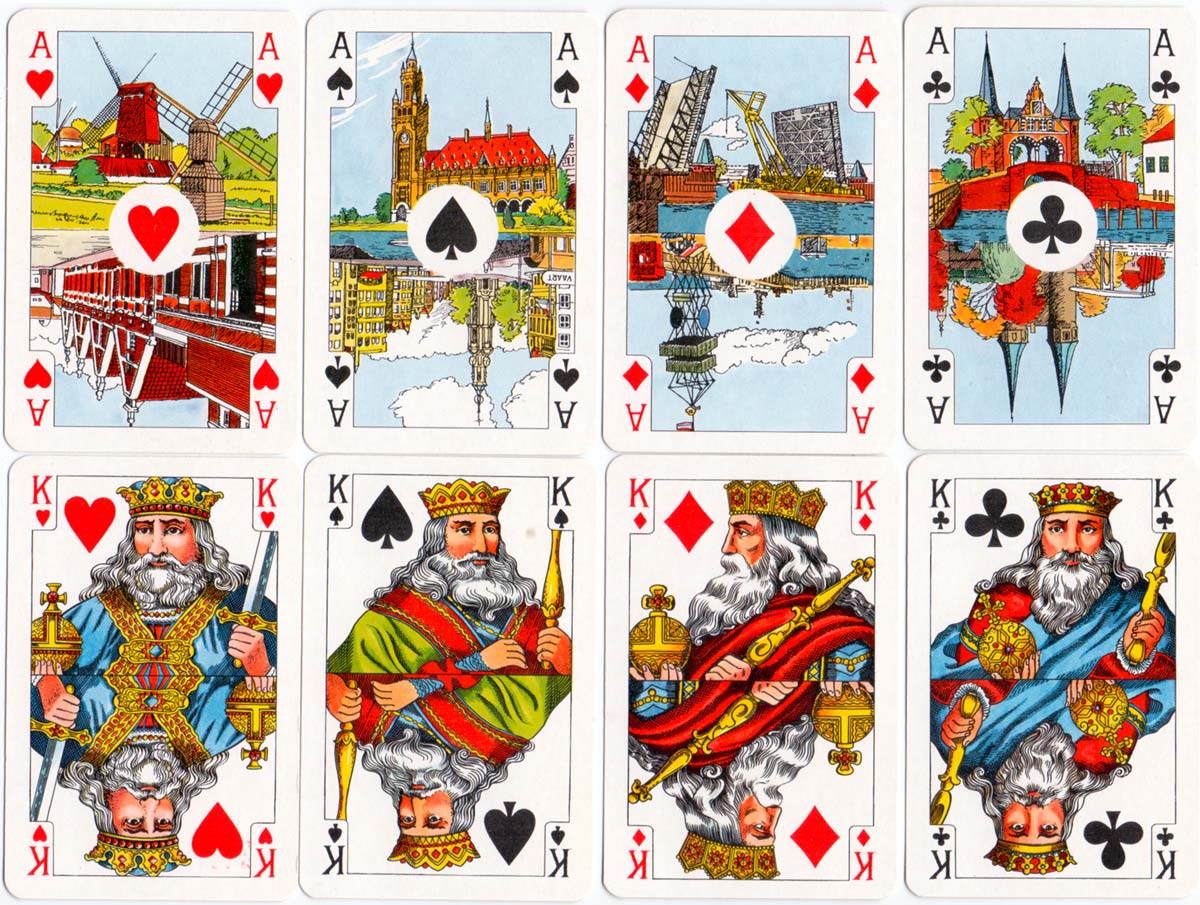

Above: Rhineland Pattern for The Netherlands by F. X. Schmid, c.1990.
Rhineland Pattern by Ferd Piatnik & Söhne, Vienna, 1996
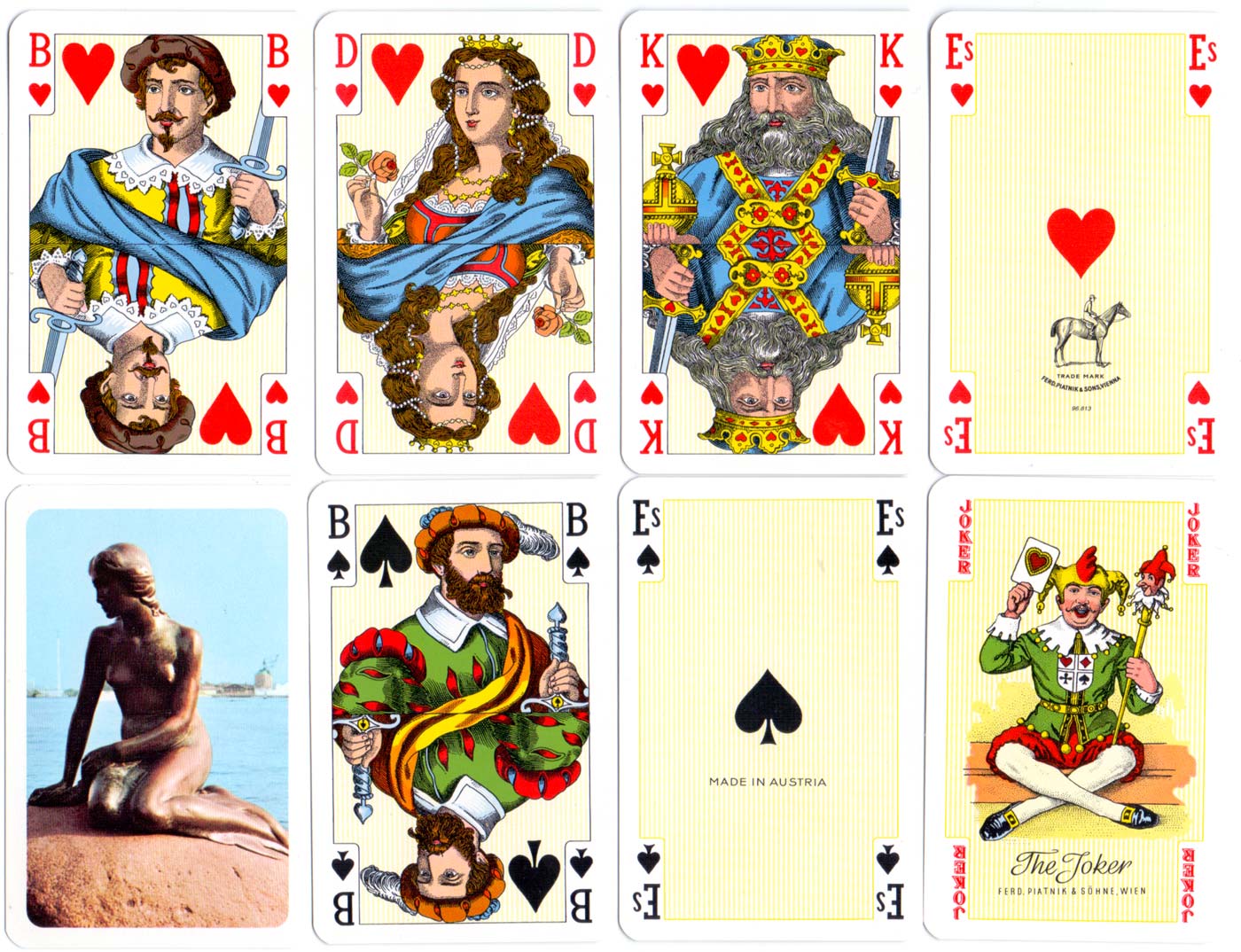
Above: Rhineland Pattern for Copenhagen by Ferd Piatnik & Söhne, Vienna, 1996.

By Rex Pitts (1940-2021)
Member since January 30, 2009
Rex's main interest was in card games, because, he said, they were cheap and easy to get hold of in his early days of collecting. He is well known for his extensive knowledge of Pepys games and his book is on the bookshelves of many.
His other interest was non-standard playing cards. He also had collections of sheet music, music CDs, models of London buses, London Transport timetables and maps and other objects that intrigued him.
Rex had a chequered career at school. He was expelled twice, on one occasion for smoking! Despite this he trained as a radio engineer and worked for the BBC in the World Service.
Later he moved into sales and worked for a firm that made all kinds of packaging, a job he enjoyed until his retirement. He became an expert on boxes and would always investigate those that held his cards. He could always recognize a box made for Pepys, which were the same as those of Alf Cooke’s Universal Playing Card Company, who printed the card games. This interest changed into an ability to make and mend boxes, which he did with great dexterity. He loved this kind of handicraft work.
His dexterity of hand and eye soon led to his making card games of his own design. He spent hours and hours carefully cutting them out and colouring them by hand.
Related Articles

CARD-AB Miltenberg
Illustrations by Rita Stern depicting notable landmarks and scenes from the town of Miltenberg in Ge...

New Altenburg Skat cards – German DDR Pattern
Authentic Altenburger Skat cards with German suits (Acorns, Hearts, Leaves, Bells).

German Travel Cards
A travel-themed educational deck helping American tourists visiting Germany.

Polish Kings and Queens – red deck
Polish kings and queens plus the court jester, illustrated in a distinctive style inspired by histor...

Briefmarken-Quartett
Quartet game featuring postage stamps from the Zones of Occupation in post-WWII Germany.

Ukraine playing cards
Historical figures from Ukraine’s past in a familiar Piatnik style.

IG Chemie Papier Keramik
Promotional pack designed by Karl-Heinz Schroers for a German trade union with comical bears on the ...

Tarock Cards by NIL Spielkartenfabrik
A deck of tarock cards from the eastern end of the ending Austro-Hungarian Empire.

Barok
Dutch pack from the 1950s with colourful Baroque courts, reprinted in 1983.

Engel-Tarot
Set of major arcana designed by Alois Hanslian depicting angels throughout.

Virgil Solis
Remarkable pack of 52 animal-suited playing-cards designed and etched by Virgil Solis.

Trappola cards from Poland
Trappola cards published in Warsaw by J G Du Port during the 18th century.

Verkeers Kwartet
A helpful quartet game celebrating the 75th anniversary of road safety exams making traffic safer.

Politiker-Skat by Bubec
Caricatures of world leaders, including many German politicians, by the artist Bubec.

Le Poker Politique
French politicians and various world leaders caricatured by the German artist Bubec.

Play Architecture
Twentieth century architects and their creations on a well-designed pack from Finland.
Most Popular
Our top articles from the past 28 days

